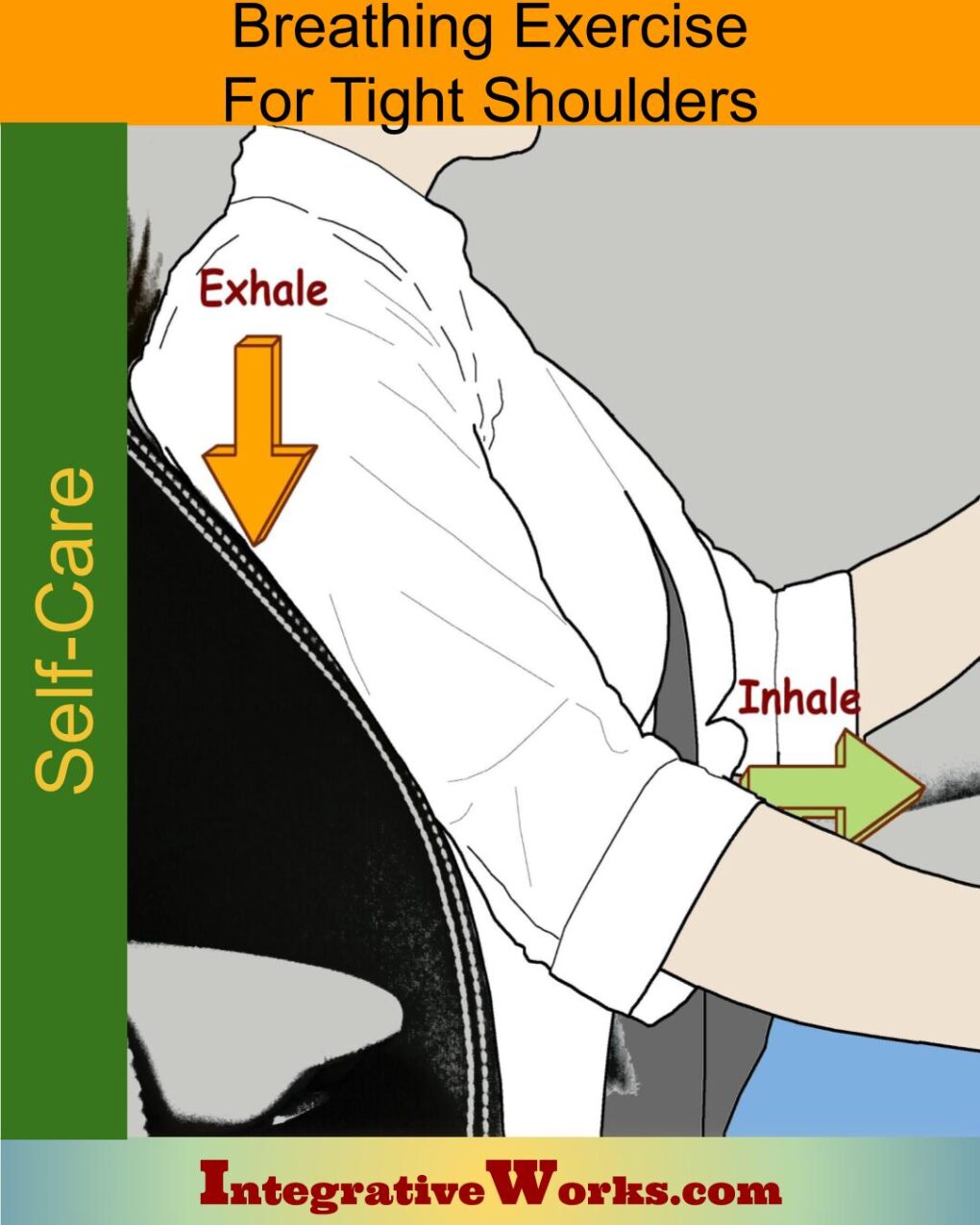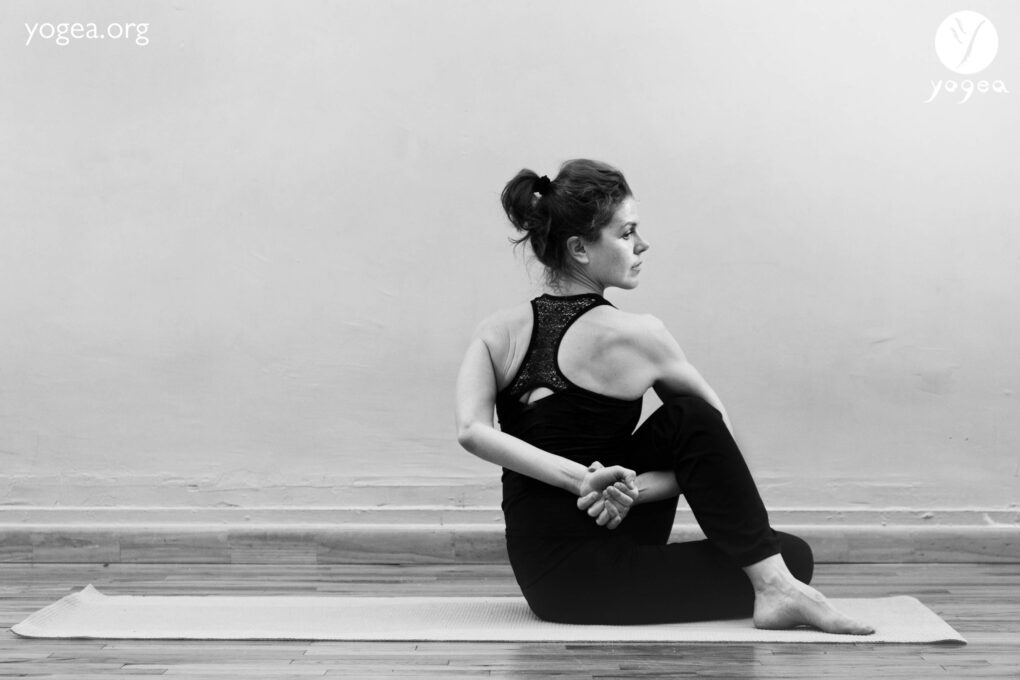Table of Contents
- Activities to Avoid or Change
- For Temporary Relief
- Stretches and Exercises for Longer-Lasting Relief
- Yoga Corner
Overview
Here, you will find self-care strategies for neck tension, pain, and irritation in the upper neck from a heavy coat or backpack. Additionally, this tension and irritation may extend into the shoulder. In this other post, you can find more about this pain pattern, what aggravates it, and how people describe it.
An underlying chronic condition like fibromyalgia or structural problems in the upper neck makes getting relief more difficult. In those cases, see your bodywork professional.
Activities To Avoid or Change:

Once the trigger point is activated, several known activities keep it aggravated. Here, you will find activities to avoid for self-care of this neck tension.
Compressed by Weight
Mainly, avoid compressing the muscle. For example, a backpack, ill-fitted bra straps, a tight coat, or a shoulder bag will press into this area, are known irritants, and create additional microtrauma.
Hobbling and Toting
Also, activities that repeatedly or unevenly raise the shoulder aggravate this trigger point. Notably, using a poorly fit cane is a problem. More likely, especially with middle-aged clientele, leaning on the bars of a treadmill when fatigued aggravates it. As I mentioned in the first post, carrying buckets, bales, or blocks irritates this.
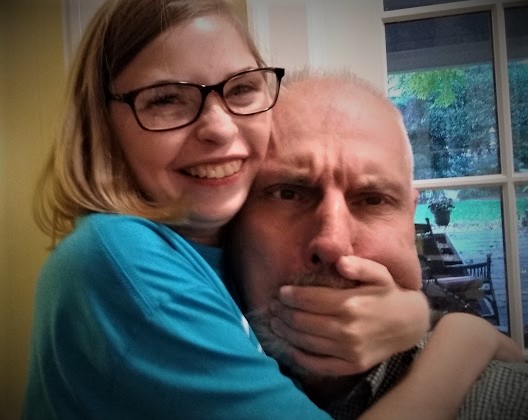
Avoid Twisting and Tilting
Subtler activities that tilt and twist the neck while lifting the shoulder also agitate this trigger point. So, twisting to the side while reaching back to tend to a child in a car or playing the violin can activate this neck tension. For example, one client aggravated this trigger point by twisting quickly to answer his wife while sitting at the dinner table.
This muscle could get aggravated if your kid hugs your neck like this. Yet, it’s completely worth it. Self-care for reducing neck tension with family is tricky.
For Temporary Relief:
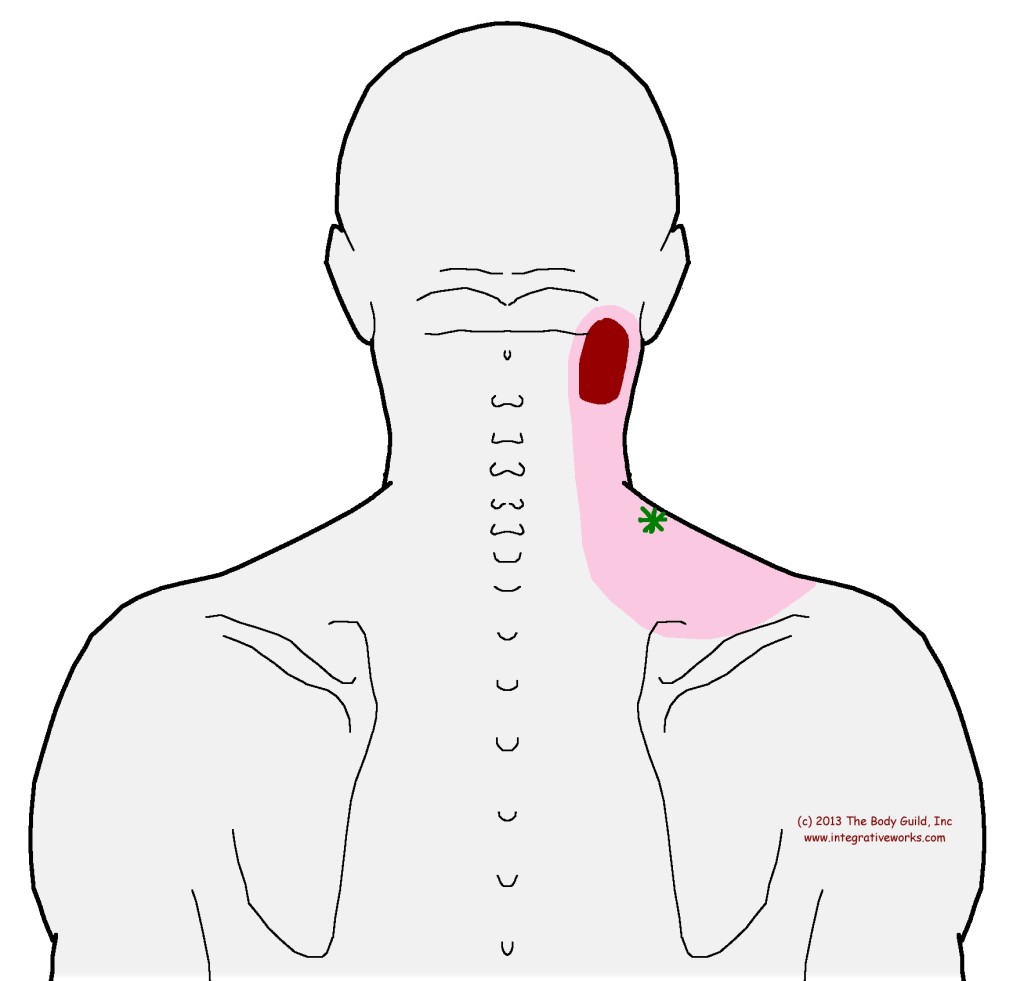
Pain Patch
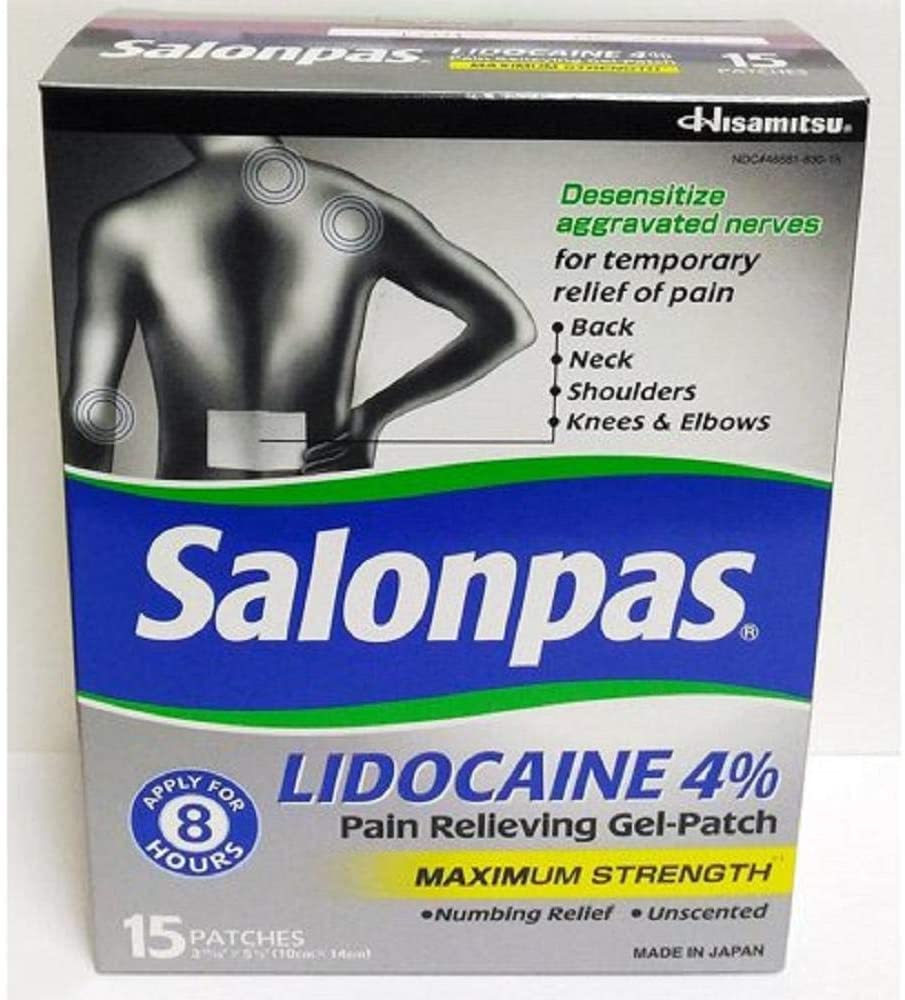
A patch of Salonpas or IcyHot will offer relief when it bothers you. These medium-sized patches are the right size to cover that green asterisk on the trapezius muscle. In addition, these patches have lidocaine, an analgesic that helps to calm the local irritation. They are available locally or on Amazon.
These self-care activities, like over-the-counter drugs, are not intended to replace appropriate medical attention. If you have concerns about these self-care activities, get help from a professional. Use these suggestions and strategies with discretion and at your own risk. See your doctor when your pain is severe, persistent, or not responding to these simple suggestions.
Stretches and Exercises for Longer-Lasting Relief:
Breathing Exercises
Sitting for long periods with your elbows elevated can shorten the muscle. Afterward, when the elbows are unsupported, this pattern will be irritated. More, other underlying muscles complicate this structure. For example, the serratus posterior and levator scapula get involved. Therefore, reduce neck tension by properly supporting your elbows while seated.
This breathing exercise is an excellent countermeasure, relaxing the entire head and neck. So, follow up with these doorway stretches if you have rounded shoulders and a tight chest.
Address the Underlying Postural Problems
This muscle contributes to Forward-Head posture. Chronically, it becomes short and strong. Then, once the head has become imbalanced over the trunk, this muscle is supported to become shorter and stronger.
If you have Forward-Head Posture, review this collection, especially the self-care exercise Tuck, Tilt, Turn, and Lift.
Sensory Processing and Anxiety
This problem can perpetuate more than neck tension. Research shows that it irritates the sympathetic ganglion. As a result, it is often associated with sensory integration dysfunction. Also, topical patches can offer short-term relief, but those clients need longer-lasting relief. A coat can be a comforting form of deep pressure that helps with regulation to modulate sensory processing. Unfortunately, that strategy doesn’t work when this trigger point is active.
I’d love your feedback on how this works for you and any suggestions you might have.
Email me at integrativeworks@gmail.com.
Yoga Corner
Seated Twist
The upper trapezius lifts the collarbone and pulls the shoulder back when the head is back over the shoulders. Inherently, twisting poses tend to stretch one side of the trapezius while lengthening the other. Impressively, this practitioner shows how that works.
Other Twisting Poses
Seated and lunging poses that twist to stretch hip rotators can work well for the upper trapezius. The upper trapezius contracts as the back of the shoulder moves toward the base of the spine. Conversely, the front shoulder drops down and slides around. Naturally, the ribs drop away from the base of the head, stretching the upper trapezius on that side.
Support Integrative Works to
stay independent
and produce great content.
You can subscribe to our community on Patreon. You will get links to free content and access to exclusive content not seen on this site. In addition, we will be posting anatomy illustrations, treatment notes, and sections from our manuals not found on this site. Thank you so much for being so supportive.
Cranio Cradle Cup
This mug has classic, colorful illustrations of the craniosacral system and vault hold #3. It makes a great gift and conversation piece.
Tony Preston has a practice in Atlanta, Georgia, where he sees clients. He has written materials and instructed classes since the mid-90s. This includes anatomy, trigger points, cranial, and neuromuscular.
Question? Comment? Typo?
integrativeworks@gmail.com
Interested in a session with Tony?
Call 404-226-1363
Follow us on Instagram

*This site is undergoing significant changes. We are reformatting and expanding the posts to make them easier to read. The result will also be more accessible and include more patterns with better self-care. Meanwhile, there may be formatting, content presentation, and readability inconsistencies. Until we get older posts updated, please excuse our mess.

